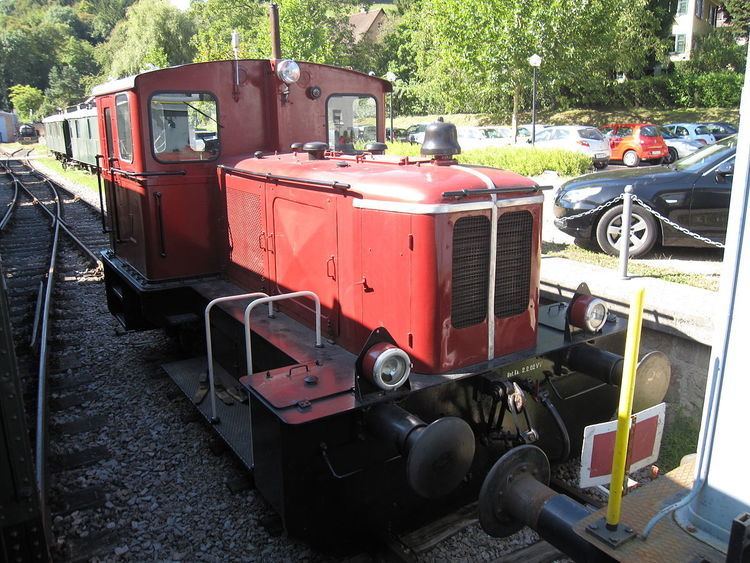Line number 9440 Maximum speed 30 2.44 Binzen Phone +49 7626 8681 | Line length 12.9 0.000 Haltingen 4.51 Rümmingen | |
 | ||
Similar Kander, Sausenburg Castle, Eurovapor, Rebenbummler, Schloss Bürgeln Profiles | ||
The Kander Valley Railway (German: Kandertalbahn, Alemannic: Chanderli) is a private heritage railway through the Kander valley in the southwest of the German state of Baden-Württemberg. The 13-kilometre-long branch line links Haltingen on the Rhine Valley Railway with Kandern.
Contents
History
On 1 May 1895, the Kander Valley Railway was taken into service by a consortium of Vering & Waechter, Mitteldeutsche Creditbank and Moritz von Cohn. On 1 April 1899 the Deutsche Eisenbahn-Betriebsgesellschaft AG (DEBG) took over the Kander Valley Railway and ran in until 26 April 1963 when the Südwestdeutsche Verkehrs AG (SWEG) assumed operational control.
After the collapse of an embankment on 4 July 1983 near Wollbach services between Wollbach and Kandern were suspended and passenger services suspended until 31 December 1983. Goods services to Wollbach were reinstated on 1 April 1985. On 14. April 1985 the line was still officially closed.
Thereafter the Zweckverband Kandertalbahn took over the infrastructure and, since 1986, have operated a heritage railway here together with the Kandertalbahn e.V. – the owner of the railway vehicles.
The railway is still used today to transport timber. There are ideas to reactivate the line in the medium term and integrate it into the Regio S-Bahn Basel network.
Museum operation
Since 1969 the Eurovapor Society has operated a heritage railway, initially with the SWEG’s historic vehicles. Following the closure of services by the SWEG, heritage services have been worked since 1986 by the Zweckverband Kandertalbahn. The vehicles themselves are owned by the Kandertalbahn’’ Society.
The saison traditionally begins on 1 May and runs until the end of October. On Sundays, three shuttle services are operated between Kandern and Haltingen, on 1 Mai, on Ascension Day and for the Rossmärkt (stallion market) in Kandern additional trains are laid on. On 1 Mai and Ascension Day there is always a guest locomotive on duty; for the Rossmärkt, diesel railbuses operate extra services. Specials can also be booked, both with steam or diesel.
Running and rolling stock
Passenger coaches from the 19th and 20th century complete the fleet.
